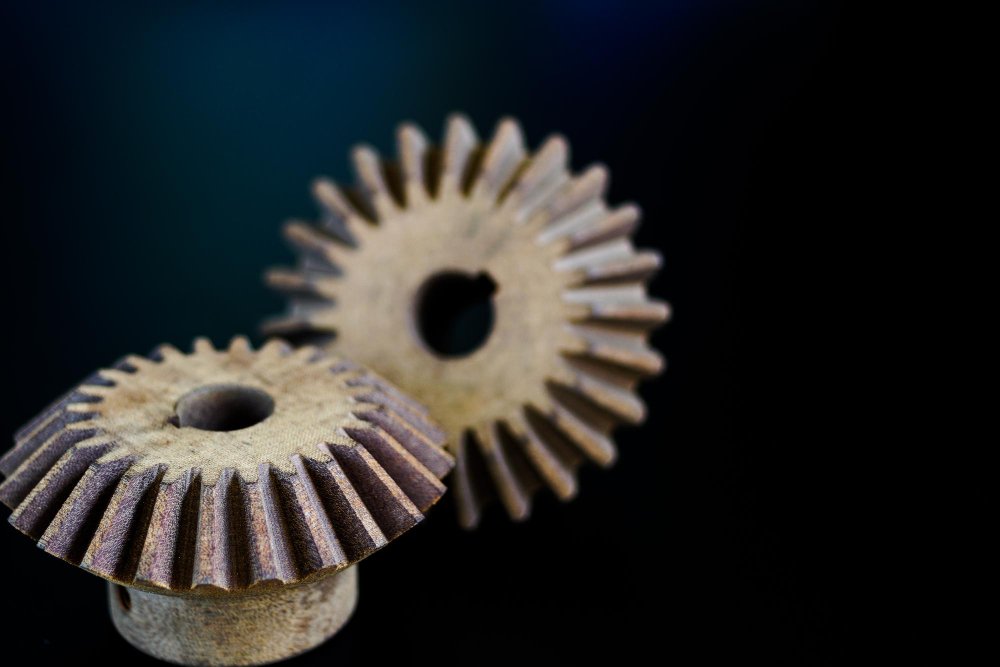
Mechanical systems have always faced a critical challenge—wear and tear. Gears, as the backbone of numerous industries, are no exception. Enter self-healing gears, a revolutionary approach combining advanced material science with engineering ingenuity. These gears promise to repair themselves, reducing downtime, extending operational lifespans, and paving the way for more efficient and sustainable mechanical systems.
At the heart of self-healing gears lies advanced material technology. Self-healing materials are engineered to autonomously repair damage caused by stress, friction, or impact. These materials are broadly classified into two categories:
Nature has always inspired innovation, and self-healing gears are no exception. Engineers have replicated these mechanisms in synthetic materials from tree bark that regrows after damage to human skin that regenerates. For example:
The development and implementation of self-healing gears, while revolutionary, come with a set of technical, financial, and operational challenges that need to be addressed for broader adoption:
Researchers are actively working on improving healing efficiency through better material formulations and responsive triggers such as light, heat, or chemical activation.
Adapting these materials to such diverse scenarios demands extensive testing and iteration.
Self-healing gears have the potential to revolutionise mechanical systems by significantly contributing to environmental sustainability. One of the primary benefits of these gears is their ability to extend the lifespan of machinery. By repairing themselves, they reduce the frequency of replacements, thereby cutting down on the demand for manufacturing new parts. This not only conserves raw materials but also minimises the energy consumption associated with production processes. Moreover, fewer gear replacements lead to a substantial reduction in industrial waste, aligning with global goals for a circular economy. Industries such as automotive and aerospace, which generate significant amounts of metal waste, are poised to gain immensely from this innovation.
Additionally, researchers are delving into biodegradable self-healing materials that can decompose naturally at the end of their lifecycle. This advancement further reduces the environmental footprint of mechanical systems and aligns with broader sustainability objectives. Beyond waste reduction, self-healing gears also promote energy efficiency. By maintaining operational performance over extended periods, they help systems consume less energy, indirectly lowering the carbon footprint of machines. Together, these factors make self-healing gears a promising solution for creating more sustainable and eco-friendly industrial systems.
The integration of self-healing gears with advanced technologies such as artificial intelligence (AI) and the Internet of Things (IoT) opens up transformative possibilities:
AI plays a pivotal role in enhancing the functionality of self-healing gears, particularly through its capabilities in predictive maintenance. Machine learning models excel at identifying subtle patterns of wear and tear that might go unnoticed by human operators. For example, AI can detect slight variations in gear vibration or temperature, which may indicate the onset of damage. Once identified, AI systems can precisely pinpoint the location of the damage within the gear system, enabling targeted self-healing or repair. This targeted approach not only optimizes the use of healing agents but also enhances the overall efficiency of the system.
Furthermore, AI contributes to performance optimization by analyzing operational data and recommending adjustments to machine settings, such as load distribution or rotational speeds. These adjustments help reduce stress on the gears, preventing future damage and extending their lifespan. Additionally, predictive maintenance powered by AI eliminates much of the guesswork associated with traditional maintenance methods, significantly reducing the likelihood of human error. By ensuring repairs are both timely and effective, AI-driven systems improve the reliability and sustainability of self-healing gears.
Self-healing gears are steadily transitioning from research labs to real-world applications, with industries making significant strides to bridge the gap. Collaborative research is playing a crucial role in this evolution, as partnerships between universities, material scientists, and industrial players accelerate the development of self-healing technologies. Notably, major aerospace and automotive companies are funding research into self-healing materials to enhance the reliability of critical components in their systems.
Prototypes of self-healing gears are undergoing rigorous field testing in high-stakes environments such as wind turbines, automotive engines, and robotic systems. These trials provide invaluable data on performance, durability, and the challenges of real-world applications. Simultaneously, efforts are being made to scale the production of self-healing materials to make them more affordable and widely accessible. Innovations in 3D printing and additive manufacturing are significantly contributing to these advancements, streamlining the production process and reducing costs.
Another essential aspect of industrial adoption is the development of regulatory standards. Self-healing gears must meet stringent safety and performance criteria to be deployed in critical applications. Organizations are working to establish clear guidelines for testing and certification to ensure the reliability of these gears. Moreover, as production techniques mature, the economic viability of self-healing gears is becoming increasingly apparent. While the initial costs of self-healing materials remain high, the long-term savings from reduced maintenance and extended gear lifespans are making this technology a promising investment for various industries.
Self-healing gears represent the future of mechanical engineering, blending resilience, sustainability, and innovation. While challenges remain, ongoing research and development promise a future where gears can autonomously repair themselves, ensuring uninterrupted performance across industries. As technology progresses, self-healing materials are not just a concept—they are poised to transform the very foundation of gear technology, making systems smarter, more efficient, and environmentally friendly.